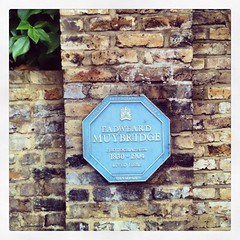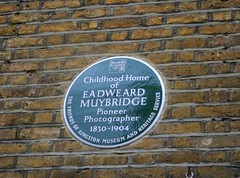Eadweard Muybridge


Eadweard Muybridge
(1830-1904)
Commemorated on 4 plaques
Eadweard Muybridge photographer 1830-1904 lived here
2 Liverpool Rd, Kingston Upon Thames, London, United Kingdom where they lived
Centenary Of Cinema 1996 #132
Eadweard Muybridge (1830-1904) pioneer of motion photography lived here 1894-1904
2 Liverpool Rd, Kingston Upon Thames, Kingston Upon Thames, United Kingdom where they lived
Childhood home of Eadweard Muybridge pioneer photographer 1830-1904
30 High Street, Kingston upon Thames, London, United Kingdom where they lived
Development of motion pictures. In commemoration of the motion picture research conducted in 1878 and 1879 by Eadweard Muybridge at the Palo Alto Stock Farm, now the site of Stanford University, this extensive photographic experiment portraying the attitudes of animals in motion was conceived by and executed under the direction of Leland Stanford. Consecutive instantaneous exposures were provided for by a battery of 24 cameras fitted with electro-shutters.
Stanford University, Campus Dr W, Stanford, CA, United States where they conducted motion picture research




